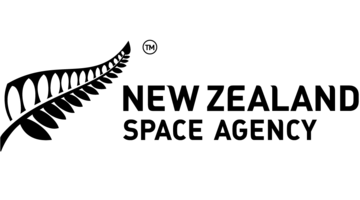Early Polynesian explorers used their astronomical and celestial knowledge to navigate the South Pacific. Once settled in Aotearoa, they adapted their knowledge to the new environment. Dr Pauline Harris (Victoria University of Wellington and Society of Māori Astronomy Research and Traditions – SMART) and David Perenara-O’Connell (Māngai, Tāwhaki Joint Venture) discuss tātai arorangi – detailed astronomical knowledge – and provide some examples.
Questions for discussion:
- Pauline says that, when Māori arrived in Aotearoa, they needed to modify their tātai arorangi to fit the local environment. Why did they need to do this?
- David talks of the stars constantly moving overhead. How do you think this movement guides the gathering of mahinga kai?
Transcript
Dr Pauline Harris
Astrophysicist, cosmologist, kairangahau Māori
Senior Lecturer, Te Kawa a Māui – School of Māori Studies, Victoria University of Wellington
Chairperson, Society of Māori Astronomy Research and Traditions
Tātai arorangi, or Māori astronomy, really began back in the Pacific 700 or 800 years ago. It was our celestial knowledge, which enabled us to travel here on large waka hourua. Being able to travel across utilising the stars obviously means that we have an extensive amount of star knowledge prior to arriving to Aotearoa. When we arrived here, we then modified our knowledge of the stars to fit our local environment.
David Perenara-O’Connell
Māngai, Tāwhaki Joint Venture
The knowledge is very clear with regard to how our people came to be here, and that it wasn’t by mistake, and it was through a deep understanding of the stars and the Sun and the Moon and the weather and the birds – all of those things that they were able to harness to get from one place to the next without necessarily knowing where that next place was.
For us at Taumutu and Wairewa – Ngāi Tahu hapū – we are inherently eeling, fishing villages, so we spend a lot of time at night out gathering our kai, and through that, the importance of the Moon, the time of the year when we gather the tuna, which we call the hinapōuri, the time of the dark nights through to the timing of the sky and the constellations that guide us in those mahinga kai activities.
So when you’re gathering tuna on the banks of the river or on the gravels of Kaitōrete with your tamariki and your kaumātua, there’s an exchange of that knowledge about the stars constantly moving overhead.
Dr Pauline Harris
For Māori, a lot of our knowledge is passed on through word of mouth, but there’s lots of different forms for that. All sorts of information is carried in things like our pūrākau, our stories, our waiata, our songs, our whakataukī. They all carry messages, knowledge, history, information, data.
I’d like to use the example Whānui. Whānui is a star called Vega. Whānui was the father of the kūmara. And his wife and him had these kūmara children, and his brother Rongo-maui wanted to bring the kūmara to Earth. And so he went up there and he asked for the kūmara. Whānui said, “No you can’t have that. You’re not allowed to take my children.” And Rongo-maui stole the children and brought them down to Earth. Whānui was very angry with the fact that his children were taken, and he sent down his other children, which were like caterpillars and stuff, and they were sent down to Earth to destroy the crops of the kūmara so that they couldn’t use them.
There’s lots of different messages in there. There’s messages around the wrongdoing of stealing things but also about the relationship between kūmara and the star Vega or Whānui itself. And when that star rises, it indicates the time of the year, around about March, which is when you have some practice associated with the kūmara.
Acknowledgements
Dr Pauline Harris, Victoria University of Wellington and SMART
David Perenara-O’Connell, Tāwhaki Joint Venture
Illustrations of waka hourua, ancient voyaging canoe and discovery of Hawai’i, Herb Kawainui Kāne Trust
Timelapses of night sky over Hoopers Inlet, Aurora Australis and Matariki rising above Aoraki, Mount Cook, Dr Ian Griffin, Otago Museum
Historical photos of eel fishing Lake Ellesmere/Te Waihora, sourced from Christchurch City Libraries Photo Hunt 2017, copyright Louise Lockie, CC BY-NC-ND 3.0 NZ
Mussels cooking, whānau gathering and preparation of tuna for drying, from What is Mahinga Kai?, Environment Canterbury
Footage of eeling F80217 – [MĀORI EELING] [193-], from material preserved and made available by Ngā Taonga Sound & Vision, courtesy of Dave Turnbull
Whānui/Vega star in sky above silhouetted trees, Ryan Hallock, CC BY 2.0
Illustration of Rongo, Kauwhata Reo, Crown copyright, CC BY 3.0 NZ
Satellite image of South Island, NASA, CC BY 2.0
Kauri pare above the entrance to the New Zealand Arthropod Collection (Te Aitanga a Pepeke o Aotearoa) at Tāmaki Manaaki Whenua – Landcare Research facility, carved by Denis Conway
Kūmara cultivation, Auckland Libraries Heritage Collections AWNS-19390517-51-4
Man and children harvest kumara, from Maori foods: taro by Amelia Batistich, photo by Helen Buttfield, School Journal 1968 Part 3 No 1, Archives reference: AAAD 699 W2953 Box 22 / l, CC BY 2.0




